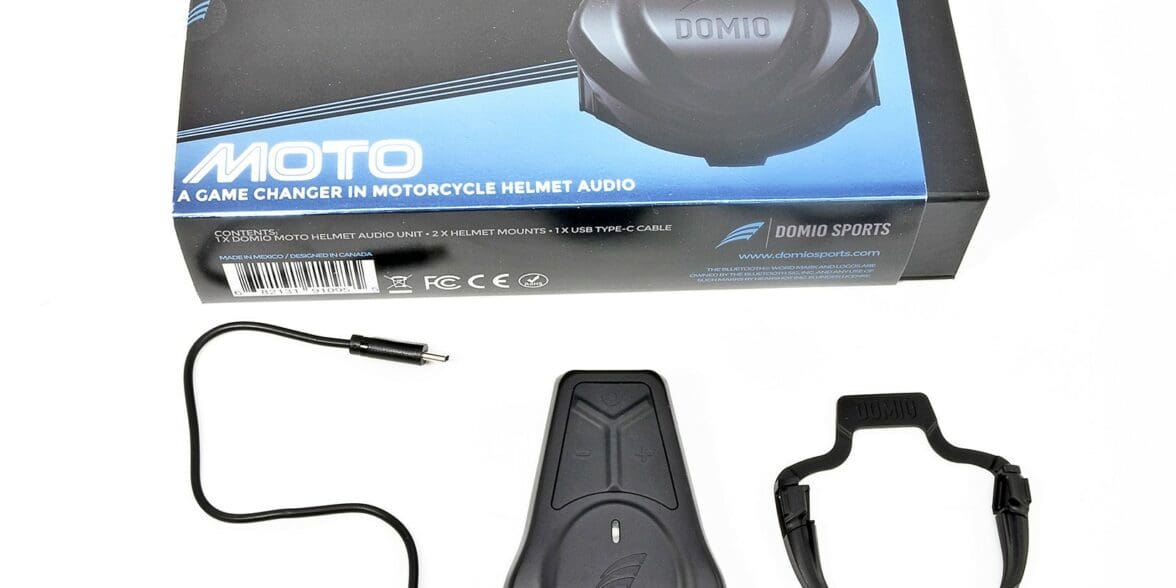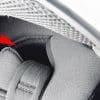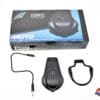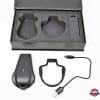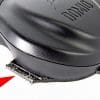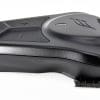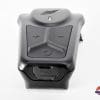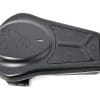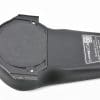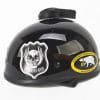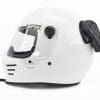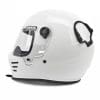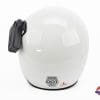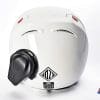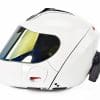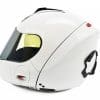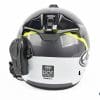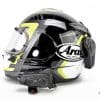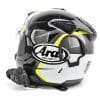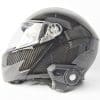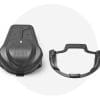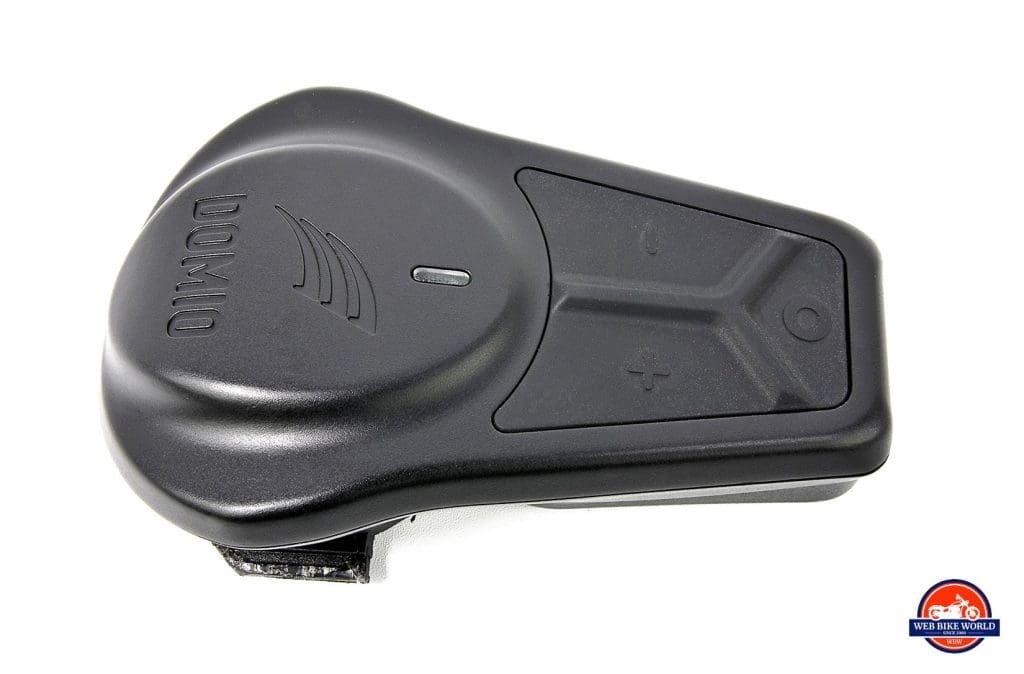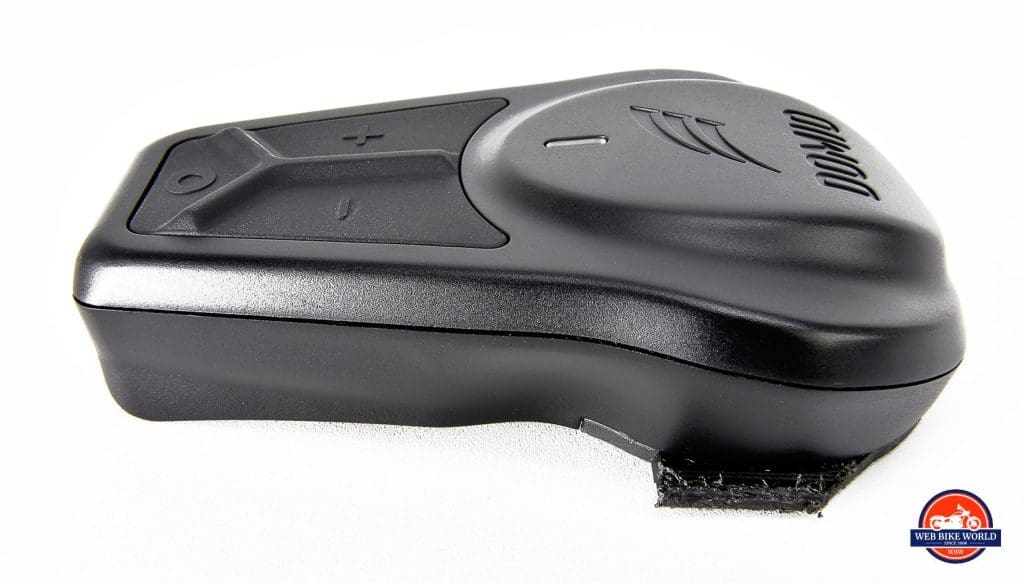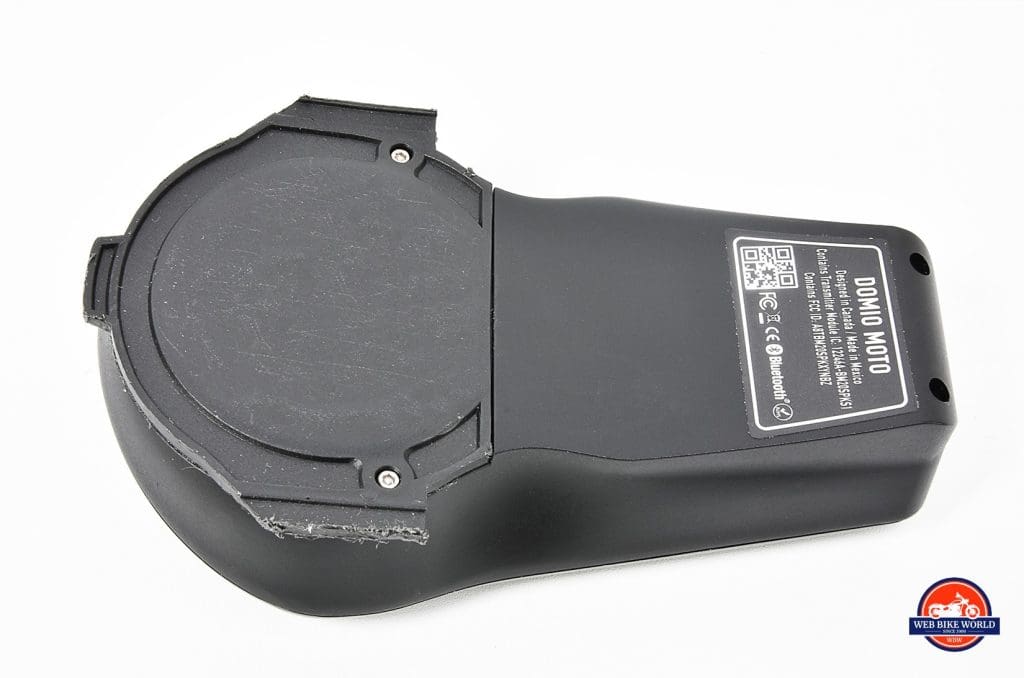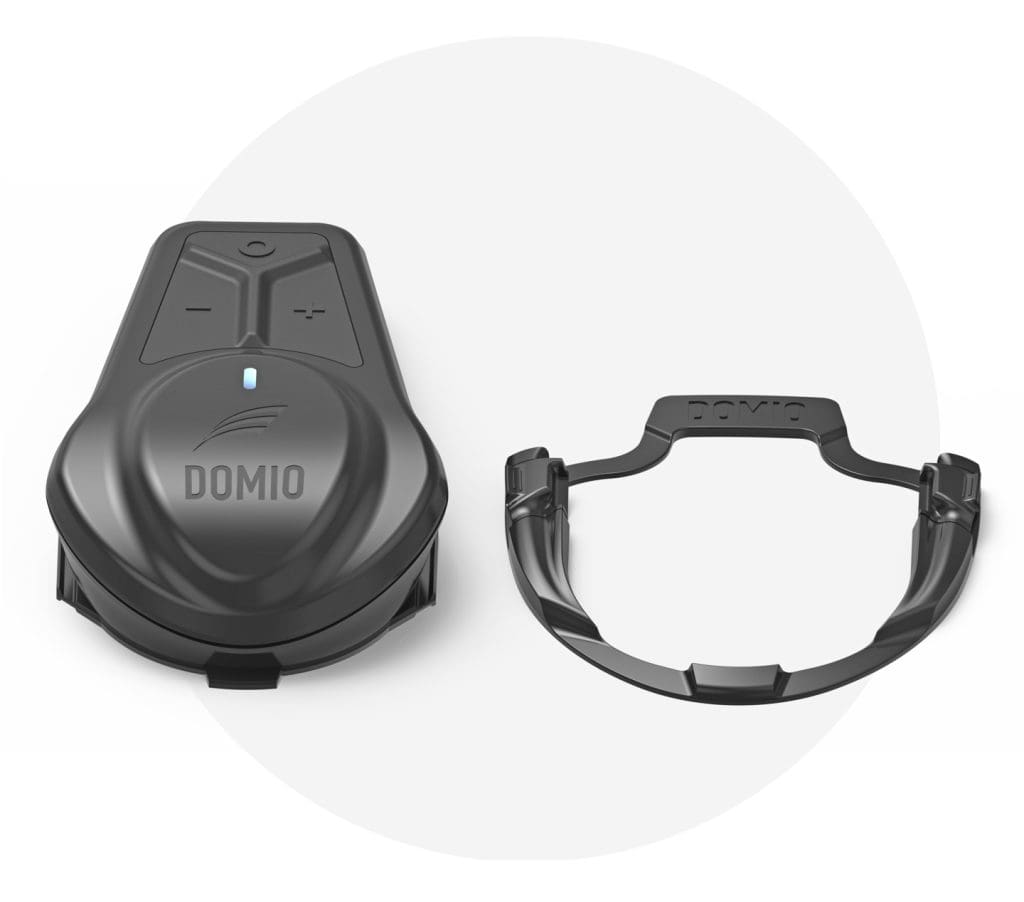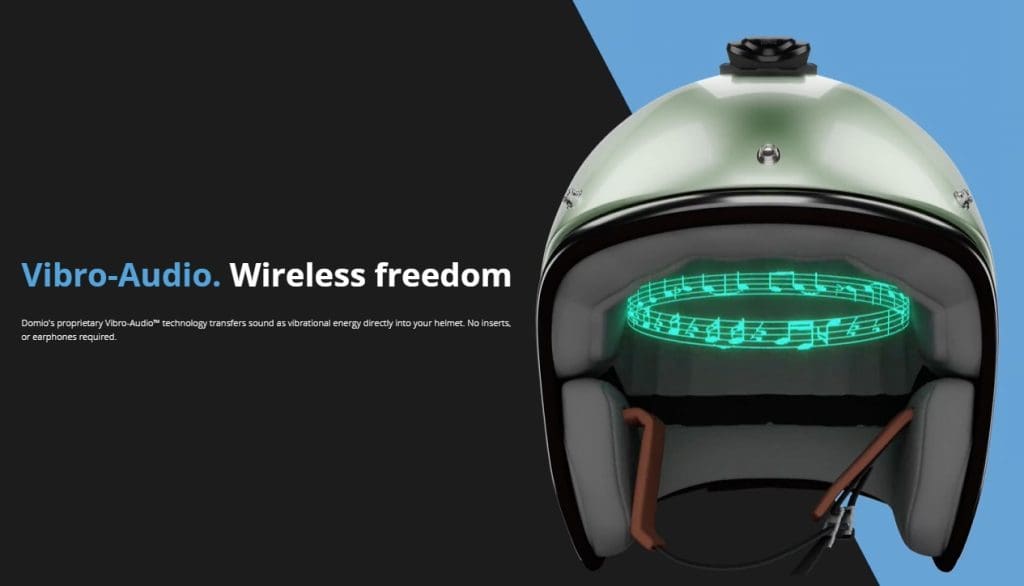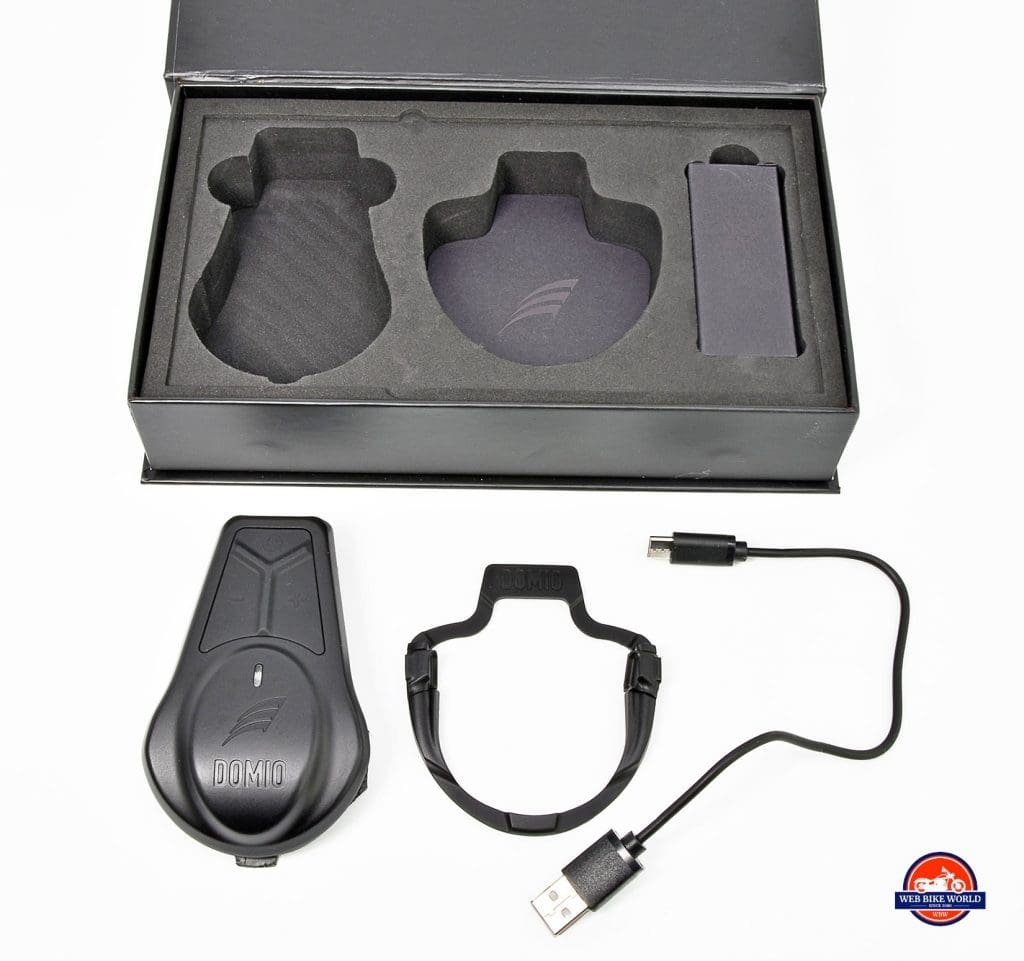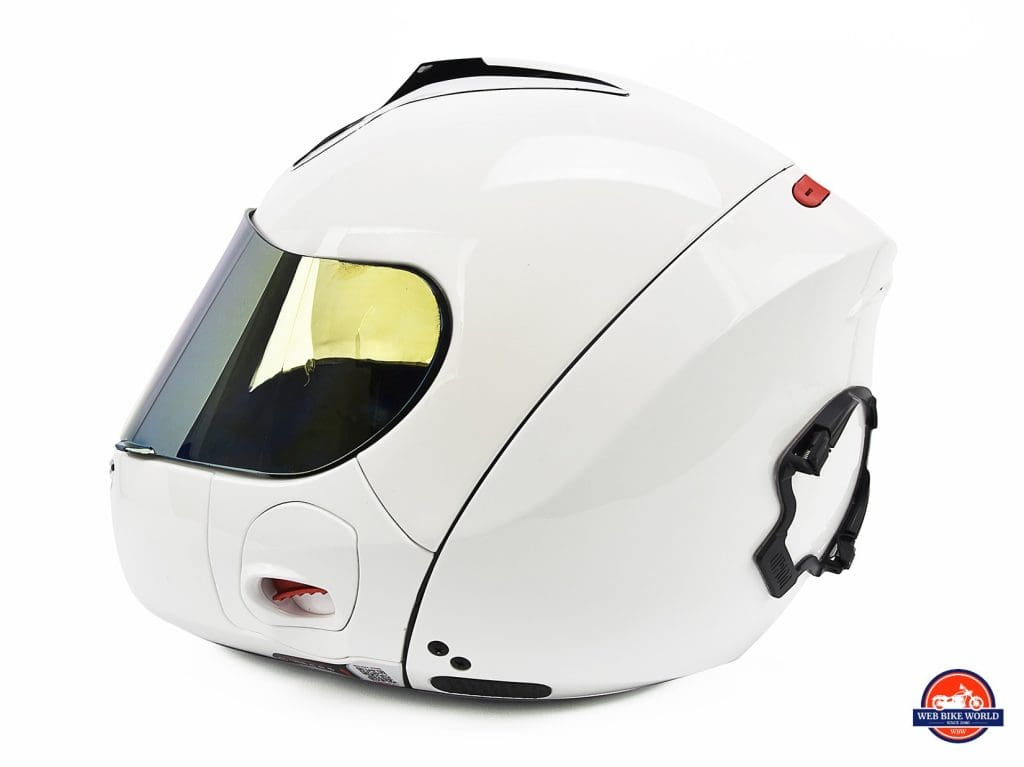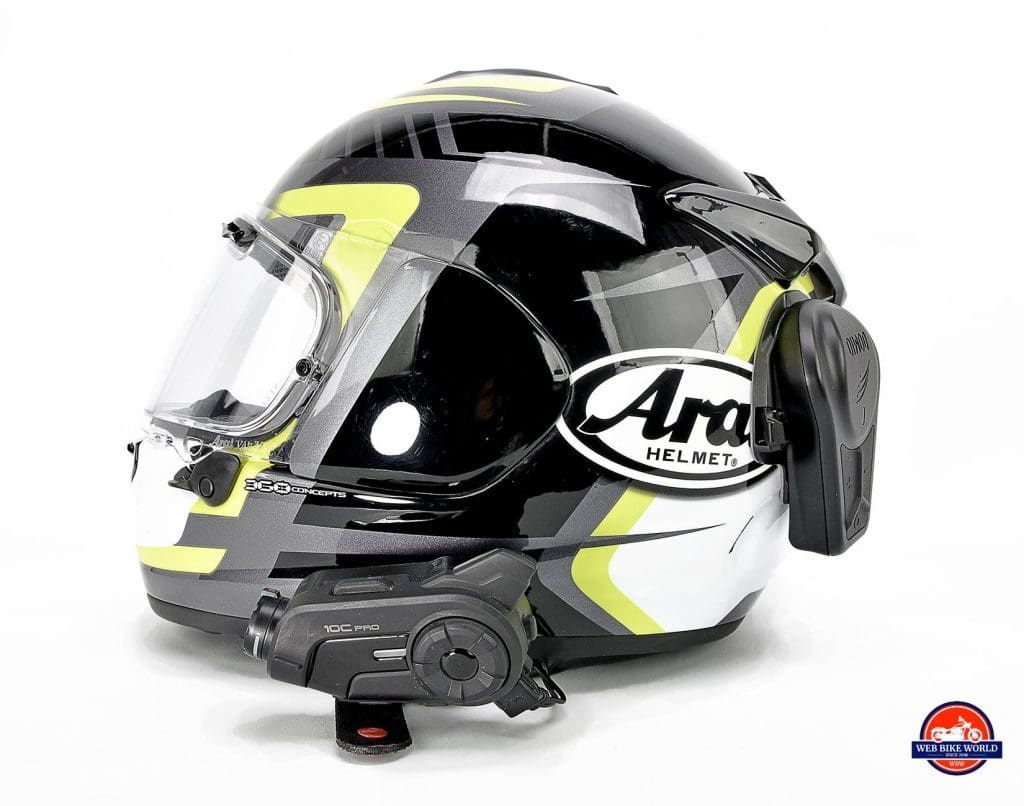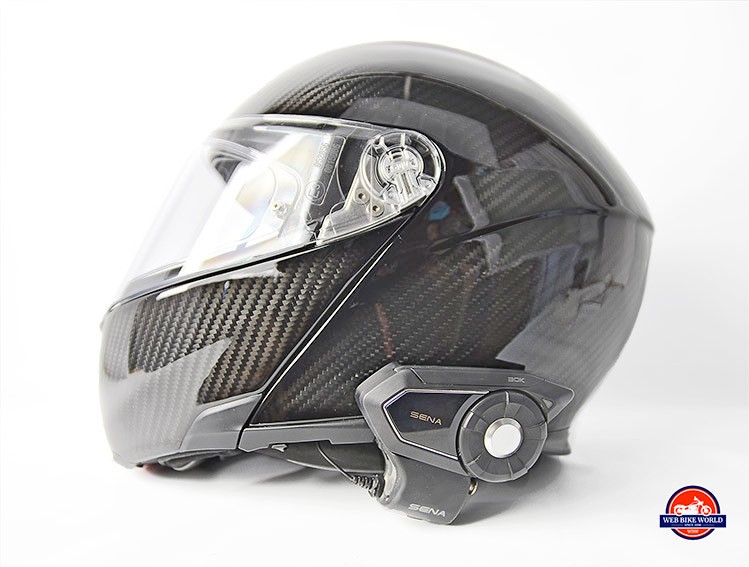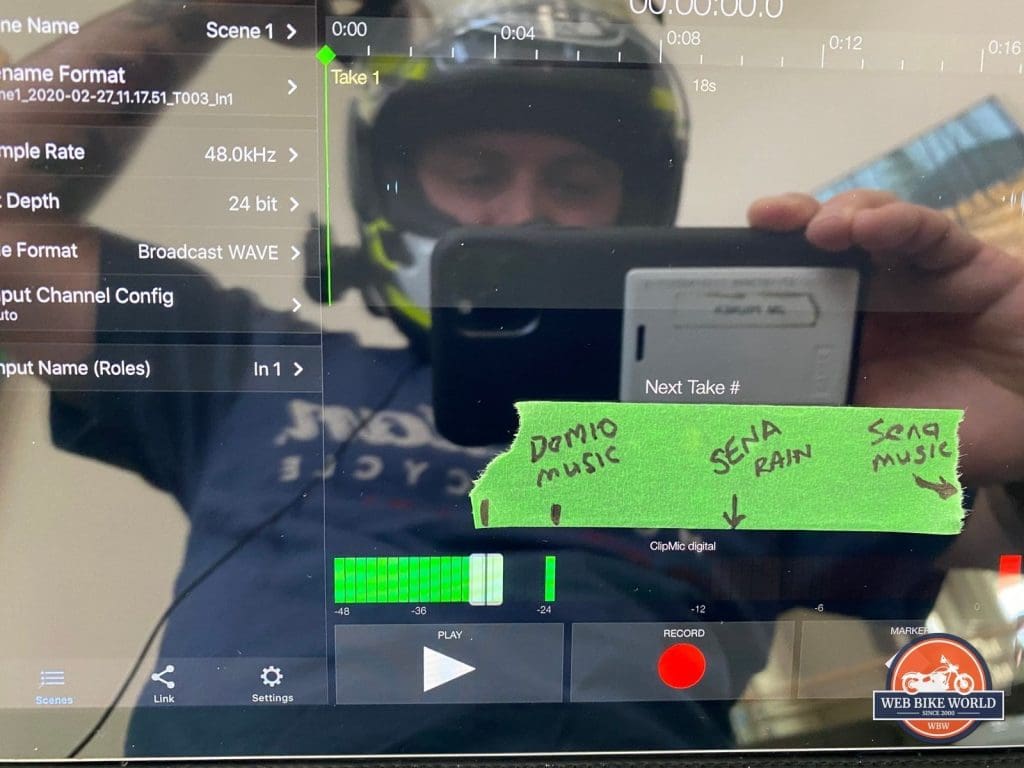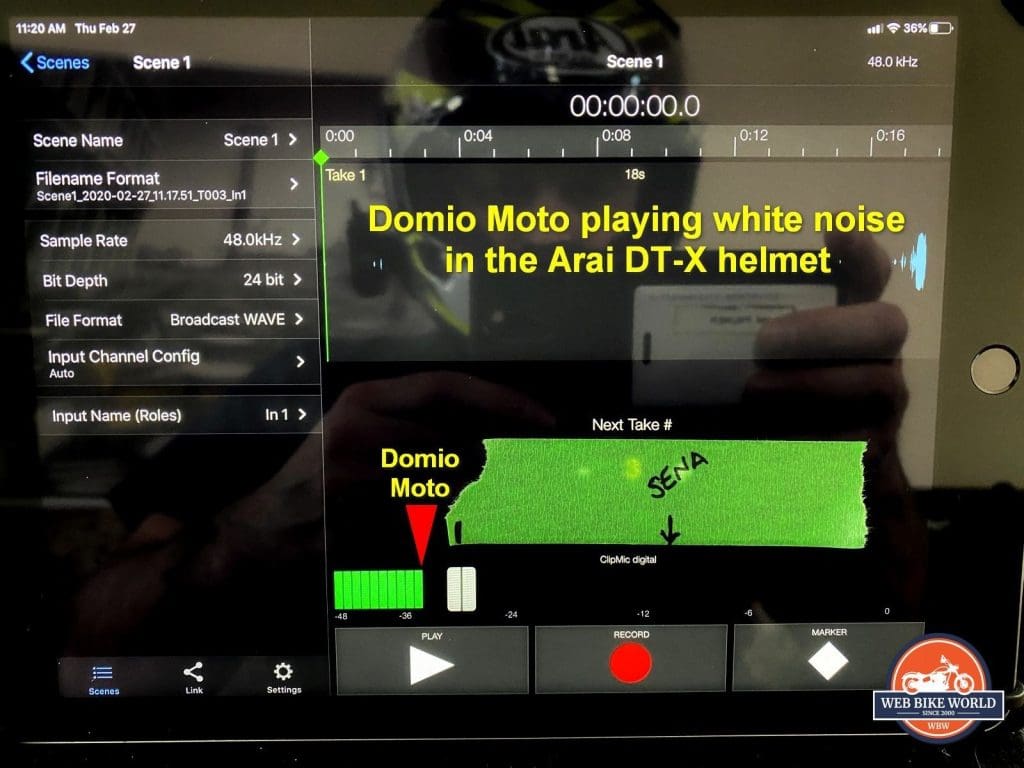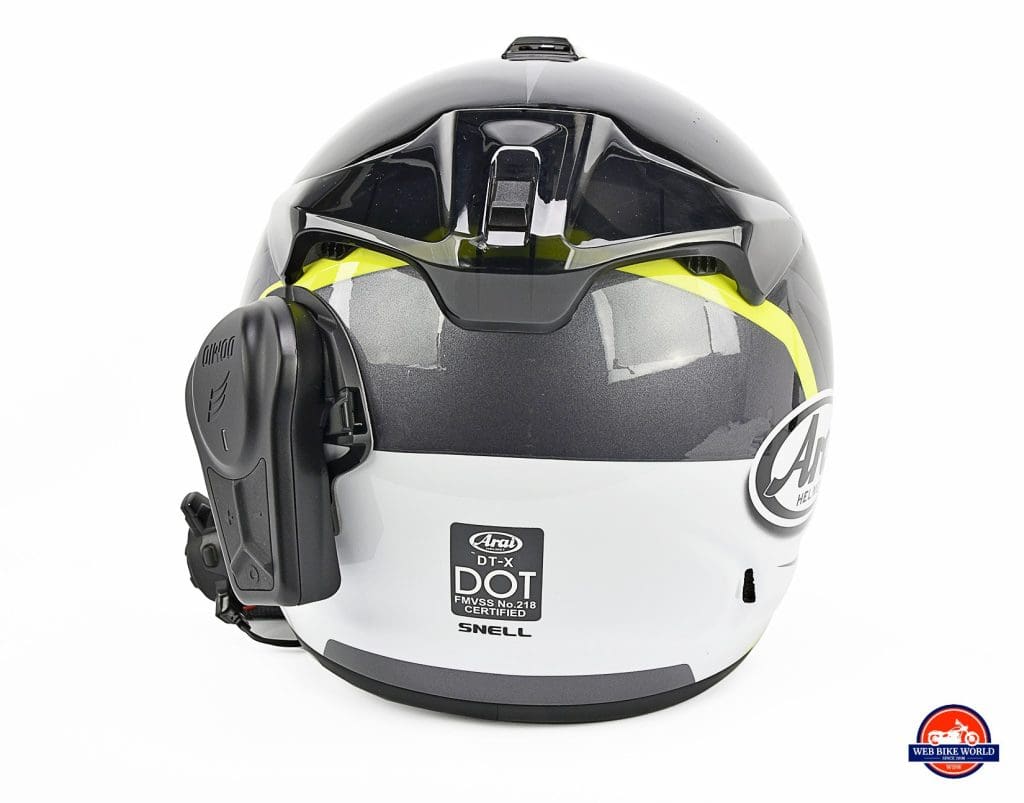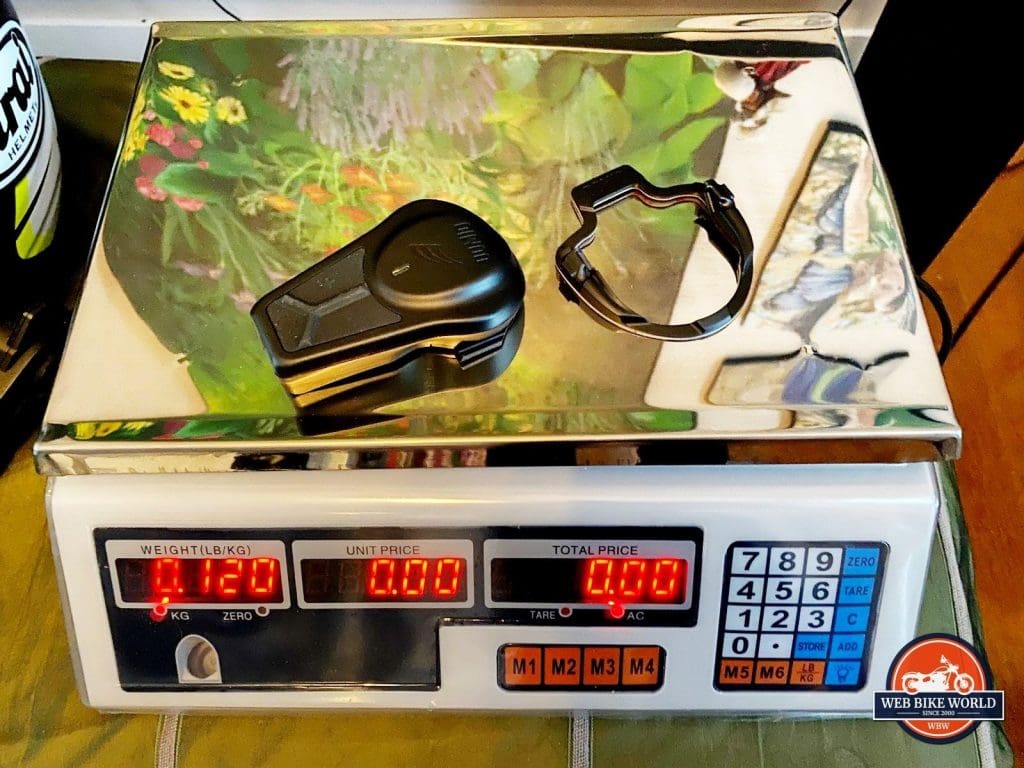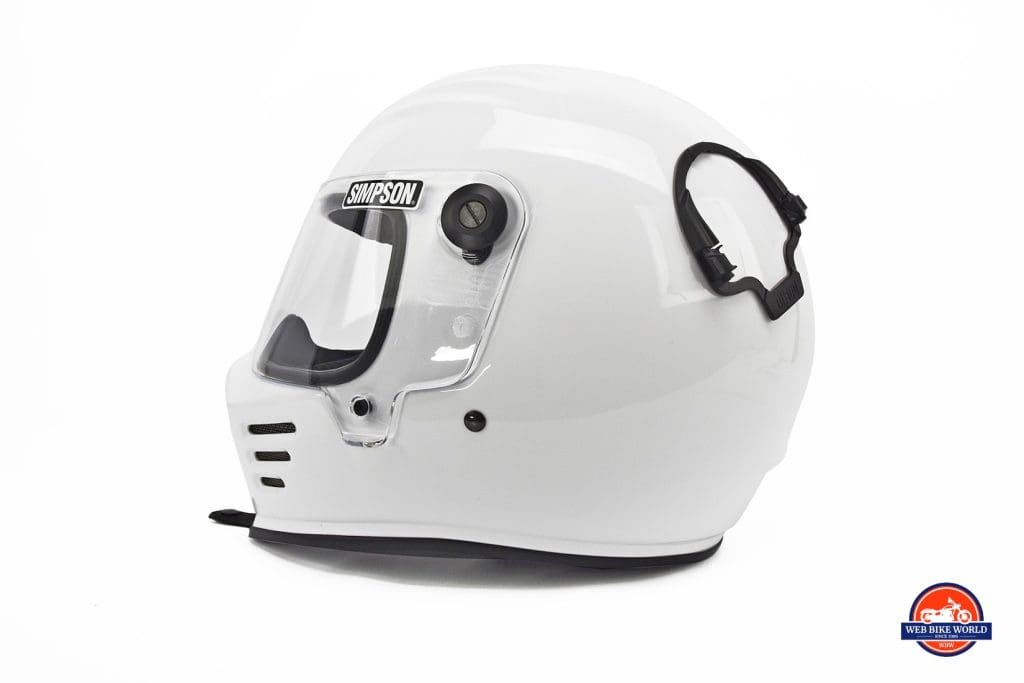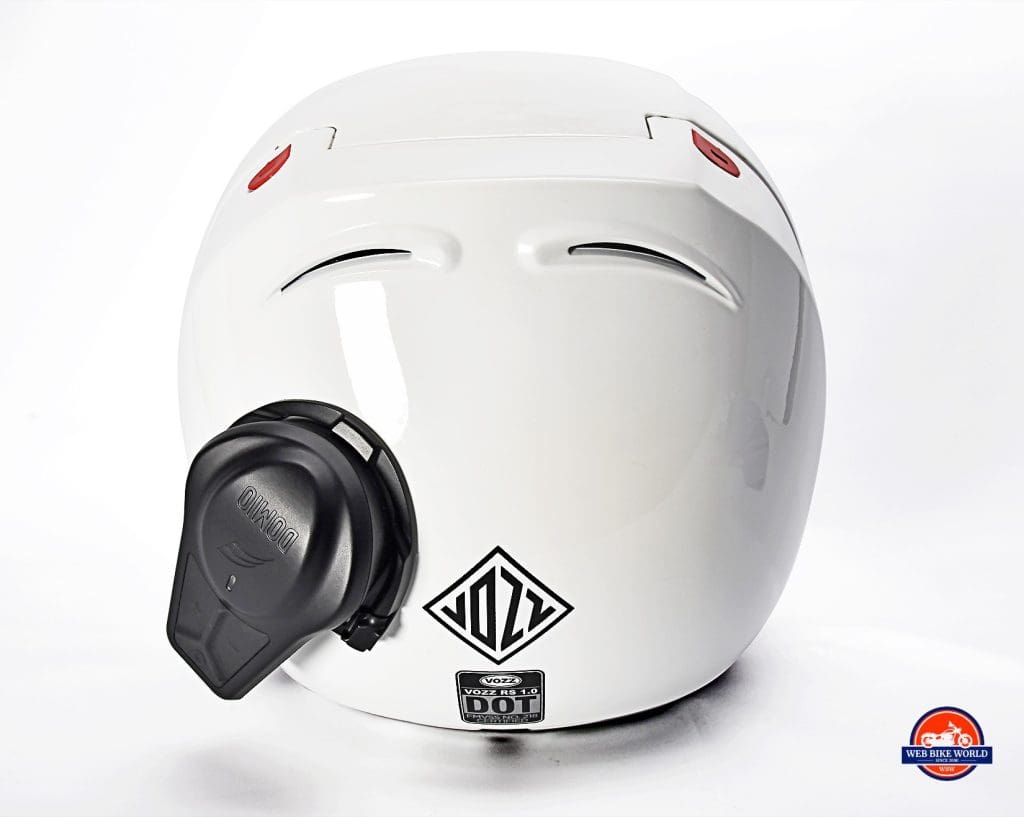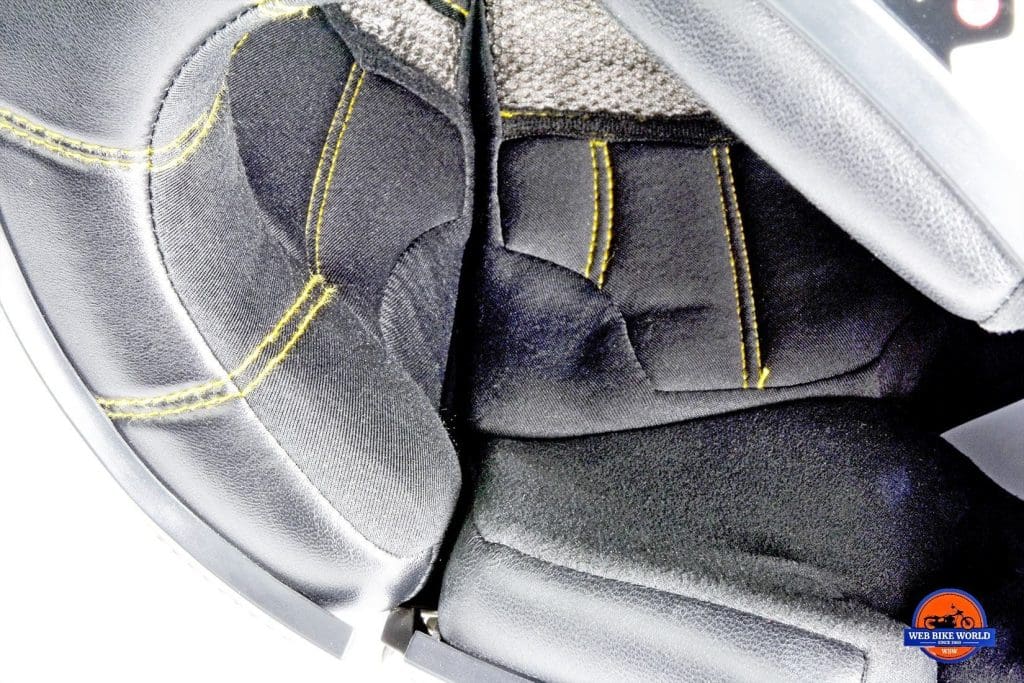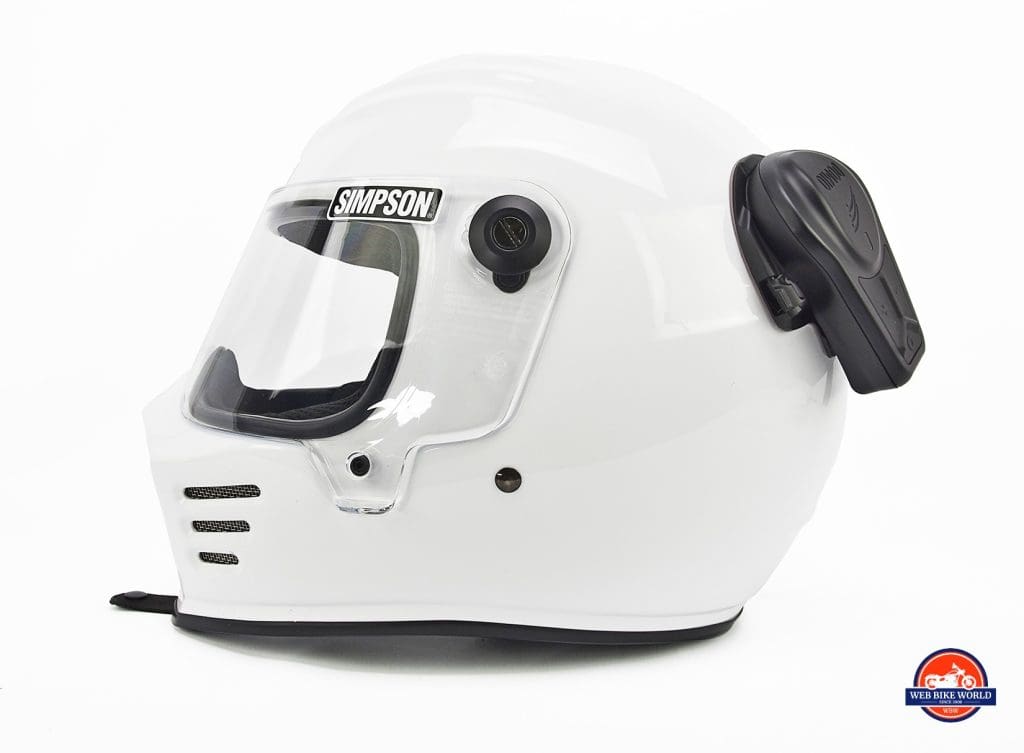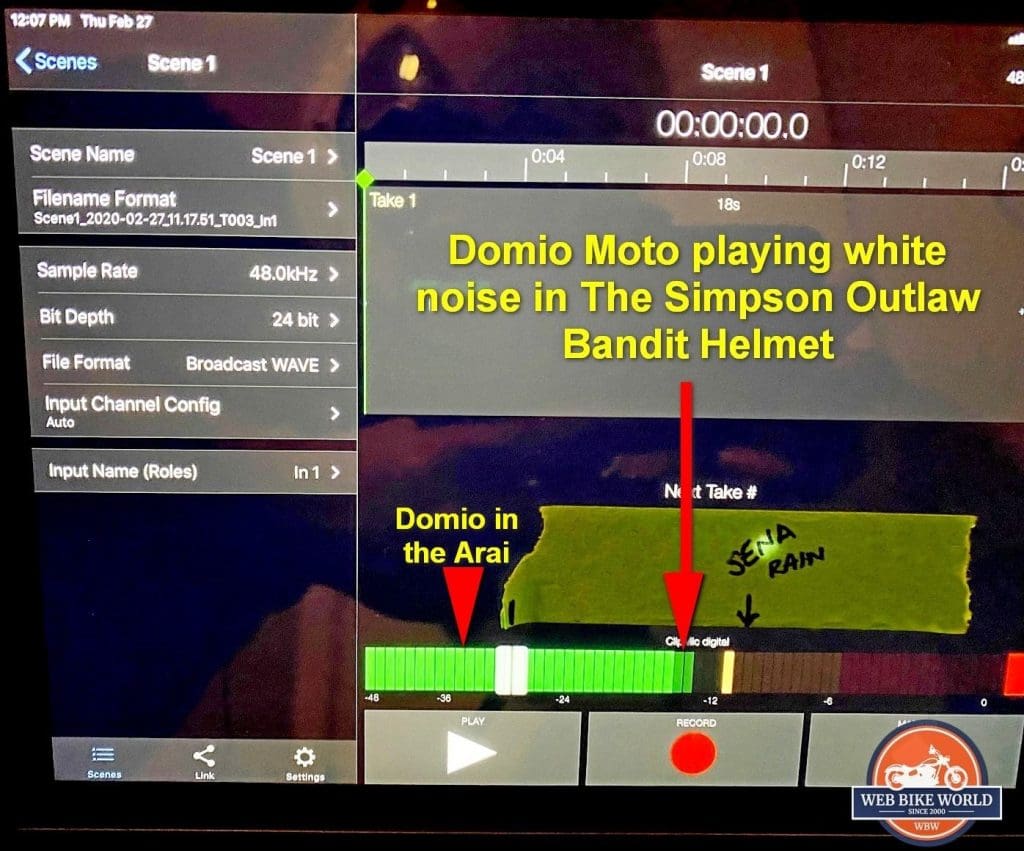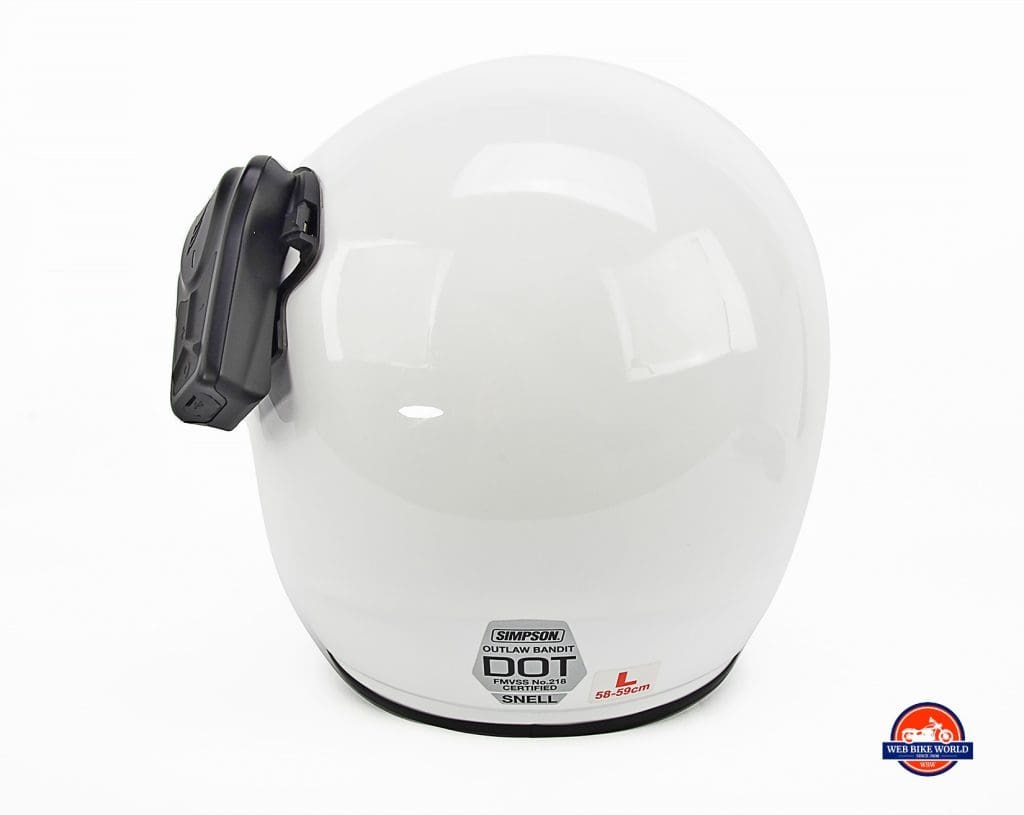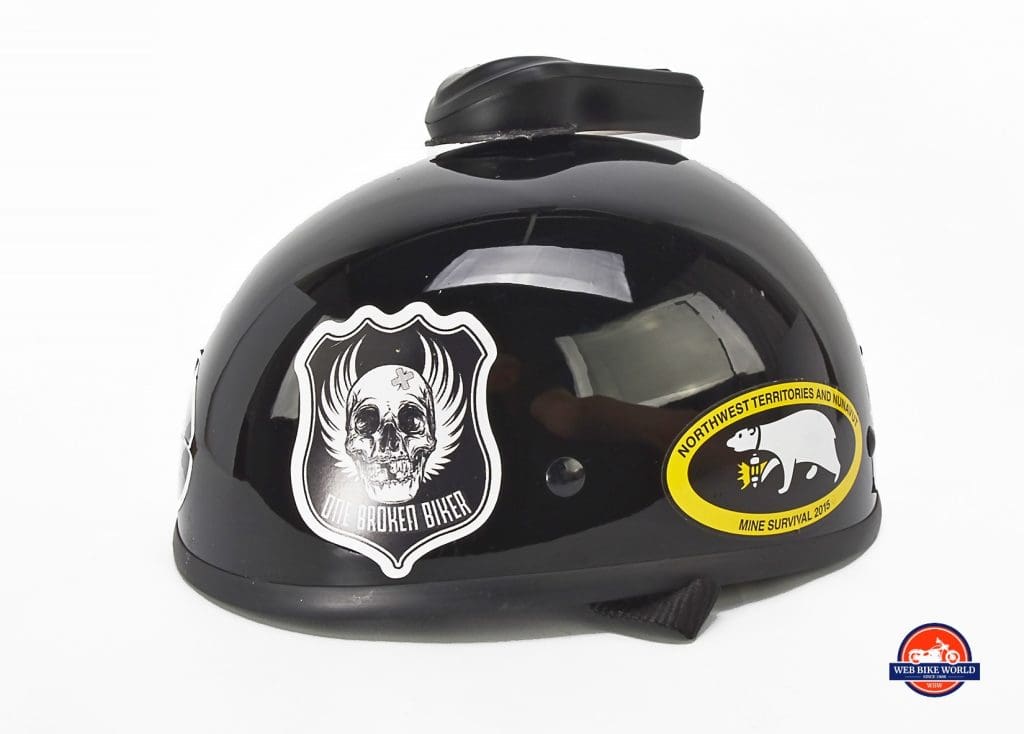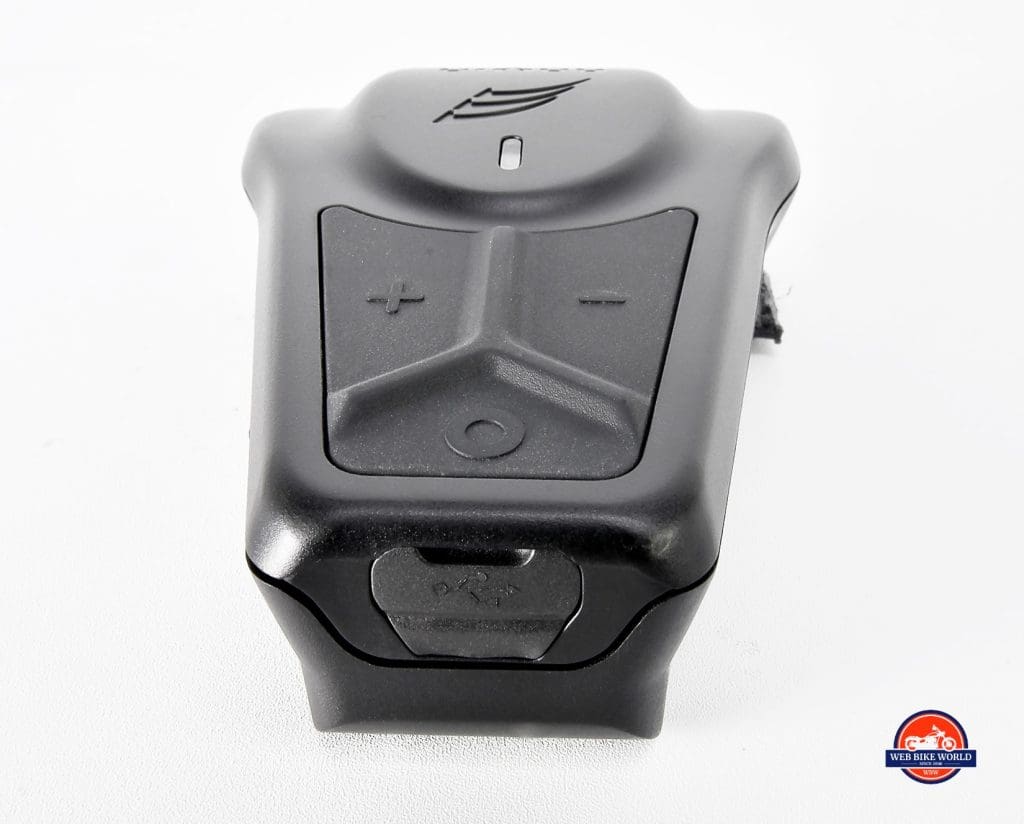WARNING
- This product is subject to much controversy and consumer uproar due to the manufacturer’s poor communication and failure to reliabley deliver the product
- Many people claim to have paid for the Domio but not receive it
- We have asked Domio to connect with us to present their side of the story, but after an initial response they have gone radio silent
- While we will leave the review of the product stand, we do not recommend you purchase this product at this time
- Scroll down to the comments below to see dozens of very upset people
Review Video
My Shortest Review Ever
Cameron Martel, my colleague, friend, and manager here at WBW likes to tease me about how I always seem to find a way to overanalyze, overcomplicate and over-write every review while taking too long to get to the point.
I’ll own that. Yes, I’m naturally a bit of a mad scientist gearhead with an insatiable curiosity and a bad habit of sharing everything I learn about a product. If that’s wrong… I don’t want to be right.
This review is perhaps the best example yet of me turning a really simple product review into a complicated one.
In the interest of summing it all up quickly, I’ll tell you the following;
- The Domio Moto is a reasonably well-built Bluetooth device that plays music seemingly forever on a charge and could be a great fit for riders who don’t like using Sena, Cardo and those other “fancy-pants” devices in their helmets.
- But in my opinion, it’s not loud enough for highway motorcycle riding, except in helmets that have large pockets of open space on the inside surrounding the wearer’s ears. The Simpson Outlaw Bandit is one example of a helmet matching that description.
- The sound quality is also slightly muffled or harsh sounding because of excessive bass levels (depending on where it’s installed on the helmet) and not on par with competing products. I could never quite find a perfect sweet spot in any of the helmets I tried it with. It needs cleaner and better-equalized sound to truly fight for market share with the other more popular big name, in-helmet devices on the market.
That, in a nutshell, is all you need to know about it other than the price point ($173 USD/ $256 CAD), which I find a bit spicy for what it does. You can only order it from the Domio Sports website.
There you go Cam and everyone else wanting the Reader’s Digest version. For the rest of you, let me take you down the proverbial rabbit hole on yet another signature Jim Pruner whimsical review…
***UPDATE November 2020***
Based upon so many comments received on this review I feel compelled to warn anyone and everyone against buying one of these devices. It appears early backers of the company haven’t had their promised units delivered or they’ve received no support after getting them when warranty issues arose.
The Hook Was Set Firmly
The Domio Moto captured my attention as soon as I saw one of their Facebook ads about four months ago. I reached out to them right away and a representative named Khaled Bashir sent me a sample Moto device at no charge for the purpose of this review. He also was always available to help me find out more about the product via email inquiry. Thank you!
The Concept
Photo from Domio
The Domio Moto is special and noteworthy in three major ways.
- It’s purely a helmet speaker system, not a two-way communication device
- It can be transferred from one helmet to another in seconds, so you’re not stuck with a device that can only be used in one brand or type of helmet
It doesn’t require any parts to be installed on the interior of your helmet to function because it uses micro-vibrations sent through the outside shell and turns your entire helmet into a speaker.
Photo from Domio
Here’s a video from Domio Co-Founder Bart Lipski showing how the Domio Pro works with micro-vibrations. The Pro is a more complex version of the Moto because it has a microphone, enabling the wearer to make phone calls and issue voice commands to Siri for example.
Here are the main specs off Domio’s website for the Moto;
- Weight: 95 g/3.5 oz
- Battery life: 24 hours of playtime (warm conditions) 8 to 10 cold weather
- USB-C rapid charging port
- Max volume output: 110 dB
- Frequency response: 50 Hz to 10.5 kHz
- Core functionality: Music & GPS (phone-based)
- Bluetooth 5.0: Fully compatible wireless
- 100% weatherproof (heat, cold, water, snow, ice, dirt)
In The Box
Your $143 gets you the Domio Moto speaker, two mounting brackets and a USB charger cable included in the box.
Oh ya, there’s a Domio sticker and some installation instructions too.
Installation On The Helmet
It couldn’t be any easier to install, especially compared to some Sena, Cardo and other Bluetooth units I’ve had to wrangle into somewhat unwilling receptacles before.
1- Find a reasonably flat location on your helmet free from bumps and ridges where you can hear the music loudest and clearest while you have it playing, then clean that area to prep for installation of the mounting bracket.
2- Remove the film from off the adhesive backing on the mounting bracket and stick it there with an orientation that will ensure the aerodynamic, curve-shaped front of the Moto is pointing into the wind. You also need to arrange it in a way where you can reach the buttons with your left hand.
3- Wait at least 30 minutes for the glue to set on the mount. The film on the bracket says to wait 24 hours before going riding, but I totally disregarded that and went riding within 30 minutes of installation. No problems.
Mounting Issues
Some people have complained about the mounting bracket not sticking well enough to their helmets or lifting off after time.
I had the opposite problem actually. The first time I mounted the Moto to my Arai DT-X I got it on there perpendicular to the direction of travel. This would have created drag and turbulence noise at higher speeds so I removed it and remounted another one at the rear of my helmet out of the airstream.
To do that I had to warm it up using a hairdryer. It was on there very tight before that and impossible to remove without damaging the mount and possibly my helmet’s finish.
The two-sided tape on the bracket separated from it during the removal process and had to be thrown away, but I believe you could replace the tape with some store-bought stuff to reapply the old mount if you wanted to avoid paying $80 CAD for another couple of mounts from Domio. Ouch!!
Canadian Weather Problems
I live in Alberta, Canada and it’s currently winter. I was forced to contemplate going out on a Timber Sled or snowmobile to get any field testing accomplished with the Domio, when suddenly the motorcycle gods thankfully answered my wish and gave me three days of “warm temperatures” to play with them on my KTM 790 Adventure instead.
Temperature Range
By warm I mean that I was able to test the Domio Moto in the 0 to 12 Celsius range (32F to 53F) and an extended amount of monkeying around with it indoors as you’ll soon hear about. That’s a fair shake better than the -34C (-29F) I was facing before this merciful warm snap rolled in.
Because of that, I can confirm the Moto isn’t afraid of cold weather. It didn’t fall off my helmet and it functioned flawlessly for six hours, all in those low temperatures. Well done!
High Temperatures
I can’t personally comment on how the Domio will perform in high heat, but Khaled assured me they’ve done extensive testing in temperatures above 40C (104F) without issues.
Still, I wonder if using a hairdryer on the mount allowed me to remove it so easily, how would long term exposure to searing Arizona sunshine affect it?
Battery Life
The battery life on the Domio lives up to the hype. I own a Sony portable Bluetooth speaker that I use in my garage when wrenching on my fleet of vehicles that can easily play for 12 hours non-stop at high volume. The Domio Moto is basically the same thing, but quieter.
I had the Domio playing non-stop out in cold weather for 4 hours out on the bike, then indoors for another 6 hours. It was still going strong when I shut it off at midnight and went to sleep.
I have no doubt it’ll last the claimed 24hrs in warm weather, and at least 10 in colder weather. Well done!
Charging time was pretty standard at about 2 or 3 hrs from dead to a full charge.
After 2 Weeks
I left town for two weeks after torture testing the Domio and didn’t charge it while I was away. When I got home I powered up the Domio to see what kind of battery charge remained and it was still at medium battery life. I’ve tested other devices that would have been totally dead after sitting that long uncharged.
A Showdown With Two Sena Products
I already had a Sena 10C Pro installed in my Arai DT-X so it was simple to compare the Domio’s sound quality and volume to it for starters.
Additionally, I have a Sena 30K mounted on my AGV Sportmodular Carbon to bring into the equation.
I decided to install the Domio on both those helmets, to begin with to see how it compared with the Sena sound levels.
The Mad Scientist Comes Out In Me
I wanted to find a scientific way to measure whether the Domio or the Sena products were louder without my personal bias interfering with the results.
I set up an experiment in sound measurement using a lavalier microphone taped to my left ear inside each helmet and an audio recording app on my iPad Mini. The Apogee recorder app on my iPad visually indicated how much sound was being picked up where the wearer’s ears sit in the helmet.
White Noise
I wanted a stable and consistent sound to play through the devices during this experiment so I chose the sound of heavy rain falling from a white noise app. It worked perfectly!
I made sure to find the ideal placement for the Domio on each helmet I used during testing to make this a fair fight, but in the end, the Domio couldn’t compete with the Sena 10C Pro or Sena 30K when it came to volume or clarity in the Arai DT-X or AGV Sportmodular Carbon.
See the photos below from the Domio vs Sena showdown in the Arai.
When I switched to playing music on the two devices instead of just white noise the difference was even more pronounced. The Domio volume was better and moved the green bars about twice as far up the scale, but the Sena measured right off the scale!
Mounting The Domio On Each Helmet
The rear of the helmet and to the left of the center seems to be my favored location to get the best mix of clarity and volume in the Arai and AGV.
Right Out Of The Gate
When I first fired up the Domio Moto and the song selection began playing I was taken aback by how loud the music was outside the helmet! It’s louder outside than inside!
It’s downright annoying to be around anyone actively playing music on the Domio device in their helmet because bystanders will be “treated” to a loud, tinny-sounding version of the song playing. It sounds MUCH better to the person on the inside of the helmet though.
Out On The Road Testing
I’m happy to report that once I had the Domio installed correctly on the helmets it didn’t negatively contribute to wind noise, turbulence, or pull/lift factors. I didn’t even know it was there thanks to how lightweight and aerodynamic it is.
I did find my Domio and mounting bracket weighed in at about 115 to 120 grams as opposed to the claimed 95 off the Domio website. A minor difference and honestly it’s a non-factor. What’re 10 grams between friends?
It’s No Contest When It Comes To Volume
At any speed, the Sena 10C Pro seems much louder and clearer to my ears than the Domio Moto.
At highway speeds in the Arai, I can hear the Sena just fine right up to 75 or 80 mph. The Domio can be heard at those speeds, but not nearly as well since the booming wind noise blends too well with the bass-biased Domio sound.
The Domio has a comparatively muffled sound than the Sena 10C Pro, which comes as no surprise since the speakers are sitting directly beside my ears in the DT-X.
Try as I might it was impossible to find a mounting position where the sound from the Domio was better than the Sena 10C Pro. Without hesitation, I easily prefer the 10C Pro sound in the Arai DT-X whether it be in my living room or out on the road.
Other Helmets
I road-tested the Domio Moto in two other helmets in addition to the Arai. A Vozz RS 1.0 and the Simpson Outlaw Bandit.
I had to try it in a few different kinds of lids because I wanted to know whether the volume issues encountered in the Arai were only found with one specimen or all helmets. I also wondered whether having the Sena speakers in the Arai and AGV helmets might have been interfering with the Domio’s performance.
Performance/Volume in the Vozz RS 1.0
The unusual hinge opening on the back of the Vozz RS 1.0 helmet makes mounting any other kind of music device than the Domio very challenging.
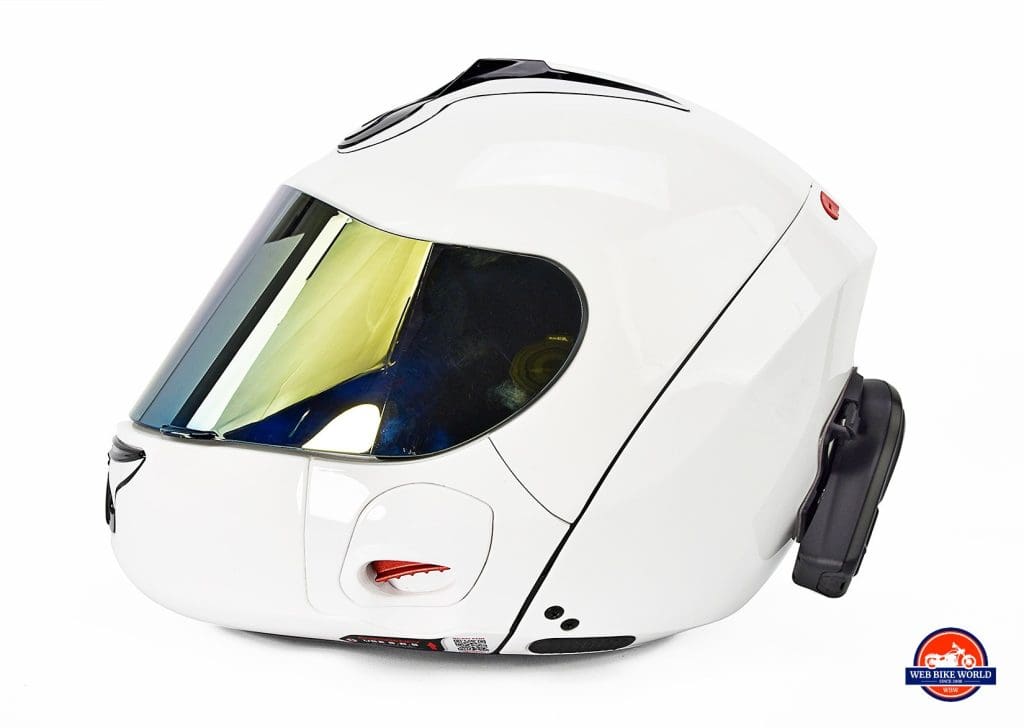

There aren’t any obvious speaker pockets on the inside to house Sena or Cardo speakers, nor is there any easy way to run microphone or speaker wiring inside.
There’s not much of an opening for your ears in the Vozz helmet (above)
That’s why I had high hopes for the Domio to work with this unique helmet. It seems like a match made in heaven on paper.
Nope. The Domio wasn’t nearly loud enough at highway speed to work well in the Vozz. In fact, it was the quietest and most muffled of the bunch despite the fact I find the Vozz a reasonably quiet helmet out on the road.
Bummer.
Performance in the Simpson Outlaw Bandit
Here’s another helmet that I’ve struggled to get a Sena or Cardo unit to mate with.
Unlike the Vozz, there are very large open pockets around the ear areas in this helmet interior. That leaves lots of wiggle room for even gargantuan-sized ears but makes it super difficult to get interior mounted speakers close enough to hear anything out of them. Even with shims under the speakers, I could never get them close enough for my liking in this Simpson.
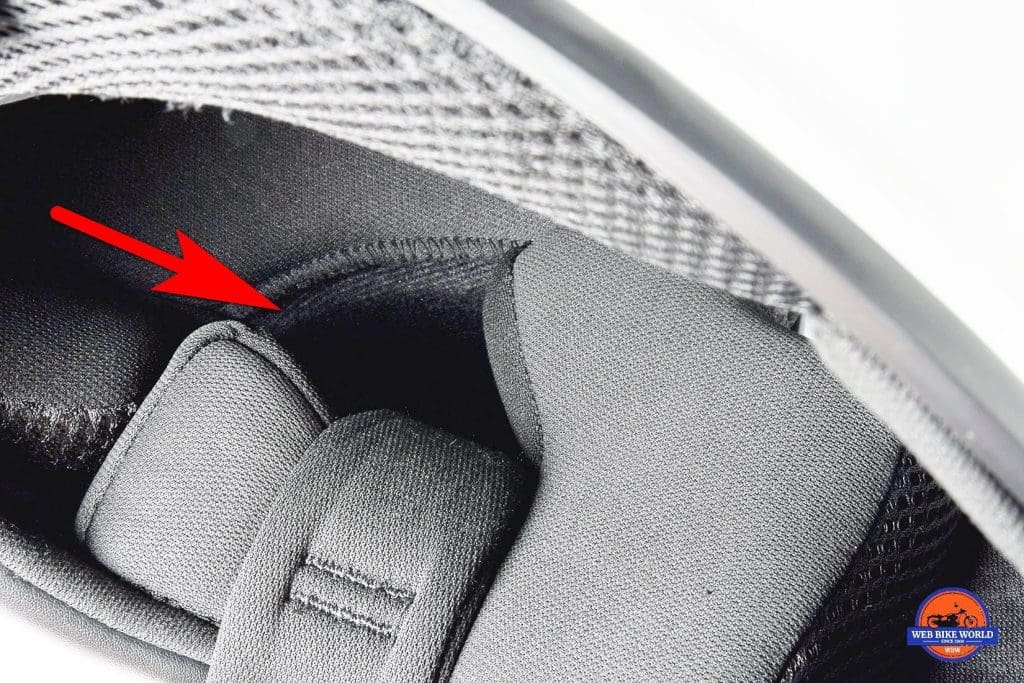


The Domio Moto is the solution to this problem!
Domio should partner with Simpson right away because I could hear the Domio music better in this Outlaw Bandit than I could in any of the other helmets. Even right up to about 80mph!
You can see in the photo above the Domio in the Simpson registered just about as loud as the white noise did in the Arai DT-X. That’s decent volume, but good sound is not just about being loud. It’s got to be clear too and the truth is that it was still a bit muffled compared to the Sena level.
Not to mention the lack of stereophonic sound is still a shortcoming in the Simpson.
But…
If you’re a Simpson owner who is frustrated as I am with Sena’s performance in your helmet, here’s a practical option to consider. I believe the aforementioned large ear pockets are the reason the Domio sound is significantly better in the Simpson. It’s the only major difference in the interior design between the group of helmets and explains the sound difference.
Performance in the AGV Sportmodular Carbon
I didn’t get out on the road with the AGV/Domio combo, but I still wanted to know whether a carbon fiber shell would make any appreciable difference using the Domio micro-vibration technology vs in the other fiberglass shells. The testing did seem to confirm my suspicion that carbon fiber shells transmit sound better from both the Sena and Domio music devices. That’s the good news.
The bad news is carbon fiber shells transmit sound better from road wind noise to the wearer’s ears as well. I believe any gains made through using this or other carbon fiber helmets with the Domio would likely disappear just as quickly once you get up to highway speed. Ditto for Sena and Cardo devices understandably, but again I prefer the Sena 30K sound over the Domio in the AGV Sportmodular Carbon.
Oh, by the way, the Domio sounds louder in a modular helmet when the chin bar is lowered, as you might expect it would. The Sena 30K volume is constant regardless of the positioning on the chin bar.
Head-Tenderizing Bass Booming
The Domio outperforms Sena, Cardo, and any other helmet music system I’ve experienced in the booming bass department. That sounds like a big point for the Domio, but actually, it’s not a good thing in a motorcycle helmet as it turns out.
The amount of bass vibration produced by the Domio is so plentiful, I found the resultant buzzing uncomfortable at times. I swear that I can actually feel my skull being tenderized by the music’s vibrating/pulsing beats inside my helmet. After riding for a couple of hours wearing the Vozz helmet I was on the verge of getting a headache, but not so while wearing the Simpson Outlaw Bandit or Arai DT-X.
Why that is I can’t say, but it likely has something to do with the Vozz helmet’s design.
Bass Is A Waste Without ANC
In motorcycle helmets, I feel loud bass is wasted because of the booming, low-pitched wind noise we all tend to encounter naturally while out realizing our two-wheeled fantasies on asphalt.
Thankfully that could be changing thanks to advances in Active Noise Control technology being built into new Cardo and Sena devices among others on the market. Once we eliminate or curtail the roaring road noise I think then the opportunity to enjoy copious amounts of bass might be there.
Until then, I don’t feel this virtue is a factor of much value for the Domio, unfortunately.
Would It Work On A Beanie Helmet?
Believe it or not, the Domio Moto works on an open face, beanie helmet!
I tried it on one I had lying around leftover from my less responsible riding days and was shocked to find that I could hear the music better after putting it up against the top part. It’s not nearly as good as the sound is in full-face helmets, but it did successfully transform even the beanie into a speaker.
That genuinely made me laugh, and it shows some of the potential for this very cool device. Don’t buy a Domio for your beanie helmets though. I mean it worked, but it didn’t work well enough to use as your on-bike music player.
Controlling the Domio
Here’s one area the Domio dominates in. Its three-button design is perfect for me to work with.
I found the three-button controls very intuitive and user-friendly. I didn’t even have to look up a user guide to figure out how to get it to do my bidding.
Powering it on or off, turning the volume up or down and skipping songs forward or backward was a breeze even while wearing my thickest Gerbing winter gloves for warmth. That really surprised me as I have difficulty manually controlling the Sena even with thinner gloves on and I like to rely on voice commands instead whenever possible.
Domio did a great job making their buttons large enough to work with and separating them adequately to avoid mistakenly pushing power when you want volume for example.
Water And Shock Resistant Testing
In winter here it’s more likely to snow than rain so I decided to shock test the Domio as best I could by dropping it repeatedly from about 3 feet off the ground onto a wooden table. It never faltered and showed no signs of damage afterward.
I also poured water over it for about 2 minutes and dropped it a couple of times underwater (even though Khaled told me not to).
The Domio kept playing music just fine after the waterboarding torture I subjected it to. I put it away for a day and a half before trying to use it again. Oops…
I suppose I learned a lesson from this experience when I found it wouldn’t power up anymore. I found corrosion in the recharging port upon inspection and water coming out of the seams. Khaled did warn me not to submerge the device and so I accept the blame for messing up the Moto in this case. Have I not mentioned how important it is to heed the advice of manufacturers???
I believe it would hold up fine in rainstorms out on the bike while riding, but not if you want to take it scuba diving.
Now I’m trying some different resuscitation tactics in an effort to save the Domio using heat, but I suspect there could be corrosion inside on the circuitry and it won’t come back to life. I’ll update this review as I go…
UPDATE!
I left the Domio in our food dehydrator for a couple of hours as my wife suggested. After taking it out and letting it cool off, I plugged in the charging cable and it charged up the battery fully!
I reconnected it to my phone and tested it by playing music. EUREKA! All the functions are back and basically it acts as if yesterday is… water under the bridge.
Update #2!
4 weeks after the Domio came back to life I found it lifeless and unresponsive to charging…. RIP Domio Moto.
Keep yours out of the bathtub!.
Crowdfunding Issues
Since publishing this review we’ve received many comments from people who invested in the production of the Domio Moto.
If you read those comments you’ll see that more than a few haven’t yet received their devices, while others have complaints about the quality.
I asked for a comment on this from Domio and encouraged them to address these issues.
Their response was to say that they’re working to ensure everyone who crowdfunded the campaign receives their device as planned, but that current supply issues due to COVID-19 are hindering that.
I sincerely hope they will follow through on that promise to me. I don’t want to see anyone feel like they’ve been swindled.
Final Verdict?
I think there’s a ton of potential in the Domio Moto design, but this version isn’t quite a fully baked cake in my opinion. It needs some fine-tuning to become wildly popular for the majority of people and their in-helmet music needs.
If the Domio engineers/designers keep tinkering with it, the next couple of Moto generations could be fantastic!
My Suggestions
I would make it capable of going ⅓ to ½ louder in volume for starters. Maybe they can sacrifice some battery power in exchange for this extra volume? Any louder MIGHT hurt people’s hearing though so perhaps that’s why it’s maxed where it is now?
I would also suggest having two speakers connected by a cable on the outside mounted on opposite sides of the helmet. That way coverage and possibly clarity would be better for sound on the inside of the helmet without boosting the volume.
Maybe that change could also accommodate stereophonic sound? If I had a second Domio on hand I would have definitely experimented trying both on one helmet.
Noise-Cancelling Ear Plugs
I also noticed Domio has its own brand of earplugs made for using with its products listed on the site.
Maybe these would help me better appreciate what the Moto has to offer? I might order some to try out. I’m not a fan of wearing earplugs while riding though.
A Remote Control
Domio has an optional handlebar remote control module for the Moto Pro that I think would also work with the Moto, but I didn’t receive it with my test model. Even though I didn’t have any issues controlling it I would prefer to have a remote control on the bars for this unit, just in the name of ease and safety.
The Price
Domio currently has a sale happening on its website dropping the price to $149 USD. That makes it a bit easier to rationalize buying, but I think for the full price of $179 USD the sound needs to be better.
The mounting brackets also seem overpriced to me for what they are, and maybe unnecessary if you only have one helmet in your arsenal.
Couldn’t you just use a chunk of two-sided tape between the Domio and the helmet to mount it and skip using the plastic bracket? True you couldn’t as easily swap it around to different helmets if you did this, but would most riders feel the need to do that?
Wear And Tear On Mounting Tabs
After constantly moving the Domio around between three different helmets over a couple of months I’m noticing some extreme wear appearing on the plastic tabs for locking it into the mounting bracket.
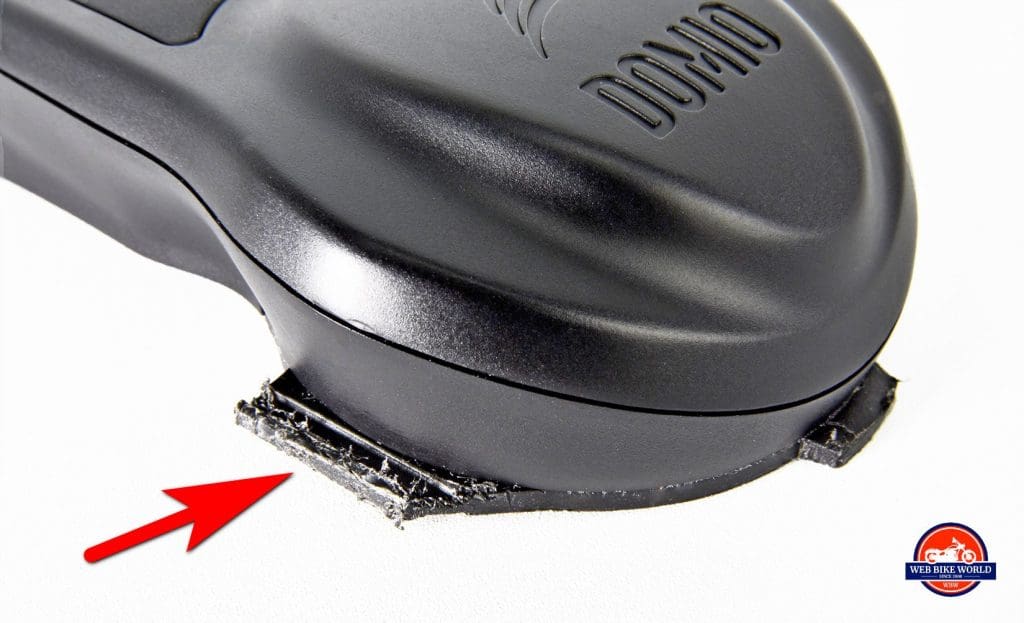


Thus far it’s still fitting and locking properly into the bracket, but if this gets any worse I question the integrity of the bond between the mounting bracket and the device.
Perhaps this is another reason to instead stick the Domio directly to the helmet in lieu of using the mounting bracket? What shape will this be in after a year or two of use?
Will I continue using the Domio Moto?
Definitely, on the Simpson Outlaw Bandit, I will. If I had to choose between the two systems, I still prefer using the Sena in-helmet music systems in most cases.
I’m sorry Khaled and the team at Domio, I wish I could report differently. Please consider my constructive criticism and keep refining this promising product. I’d like to try the next generation too! I’m very interested to see where you end up going forward with this.
- Jim
In Case You Missed It
***UPDATE November 2020***
Based upon so many comments received on this review I feel compelled to warn anyone and everyone against buying one of these devices. It appears early backers of the company haven’t had their promised units delivered or they’ve received no support after getting them when warranty issues arose.
We at WebBikeWorld.com have urged Domio to do right by their customers and backers by providing the product and supporting it afterward. I’m afraid that’s all we can do.
Pros
- Strong and straightforward build with easy-to-use controls
- Can transfer in seconds to another helmet
- Works better than other products in certain helmets
- Water/weather/impact resistant
- Lightweight
- Simple and reliable Bluetooth 5.0 pairing
- Easier install than anything else on the market
- Long battery life
- 1-year warranty
- 30-day money-back guarantee
Cons
- Volume (inside the helmet) is slightly muffled and needs to go ⅓ to ½ higher for highway clarity in most helmets
- Fairly expensive for just a music/GPS helmet speaker
- Volume outside helmet is very loud and tinny sounding (irritates others around you)
- No stereophonic effects with music
- “Thudding” vibration from bass notes sometimes uncomfortable
- Must be mounted carefully to get the optimal sound
- Wear and tear on mounting tabs?
Specs
- Manufacturer: Domio Sports
- Price when tested: $173 USD ($256 CAD)
- Designed in: Canada
- Made in: Mexico
- Kits: Moto+ coming soon, Moto 2 packs available
- Review Date: February 29, 2020


